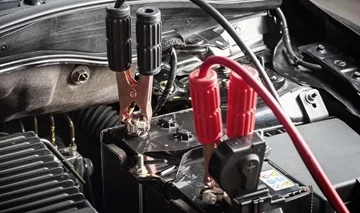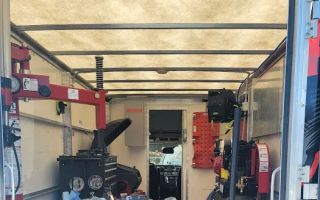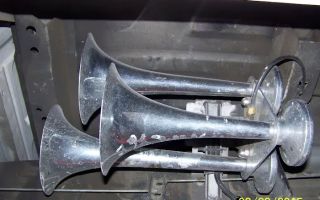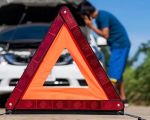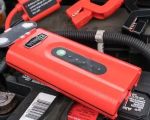There’s nothing more frustrating than being stranded with a dead car battery. I’ve been there more times than I care to admit. Whether it’s a busy morning trying to get to work or coming back from a fun day out, getting into your car only to find that the engine won't start can feel like the end of the world. Fortunately, most of the time, the solution is simple: a jumpstart. But before you connect jumper cables to your battery, it’s important to understand the proper voltage of a car battery, especially when you're trying to jumpstart it. In this article, I’ll walk you through everything I’ve learned about battery voltage and jumpstarting, so you can approach the situation with confidence.
1. Understanding Your Car Battery Voltage
Before jumping into the specifics of jumpstarting, it’s essential to understand how your car battery works and what voltage it’s supposed to have. In most modern cars, a lead-acid car battery is used, and these batteries typically operate at 12 volts. This means that when your battery is fully charged, it should have a voltage close to 12.6 volts. But that’s just the beginning of the story. When the engine is running and the alternator is charging the battery, the voltage will rise to between 13.7 and 14.7 volts. This is normal, as the alternator works to replenish the battery’s charge. But what happens when your battery’s voltage drops? That’s when things can get tricky.
When your battery is at 12.0 volts, it's considered to be around 50% charged. A voltage of 11.8 volts means the charge is even lower, and your car might struggle to start, if it starts at all. At 11.5 volts or lower, you’re dealing with a battery that is nearing the end of its charge, and it may not be able to power the car’s starter motor effectively. It’s at this point that you’ll likely need a jumpstart to get your car moving again.
2. What Voltage Should Your Battery Be Before Jumpstarting?
Knowing the exact voltage your car battery should have before attempting a jumpstart is crucial. If you’ve ever found yourself in a situation where you need to jumpstart your car, you may have wondered if the voltage is low enough to require assistance or if the battery could still start the car. From my experience, here’s what I’ve found:
- 12.0 to 12.4 Volts: If your battery measures between 12.0 and 12.4 volts when the car is off, it’s likely still able to start your car, but it’s on the lower end of the healthy voltage range. At this point, the battery may struggle, especially in cold weather or if your car has been sitting for an extended period. A jumpstart might be necessary.
- 11.8 to 11.9 Volts: When the voltage drops below 12 volts, it’s a clear indication that your battery is losing charge. If you test it at this range, it's best to seek assistance. This is the typical “dead battery” zone, and you’ll likely need a jumpstart to get the engine running.
- 10.5 to 11.5 Volts: A reading between 10.5 and 11.5 volts is a serious sign that the battery is very low and won’t start your car without external help. A jumpstart is almost certainly necessary at this point. If you’ve tested it and it’s consistently this low, it could be time for a new battery, especially if the car won’t start after jumpstarting.
- Below 10.5 Volts: If your car battery voltage is under 10.5 volts, it’s likely dead or completely drained. At this level, the car will not start without a jumpstart or battery replacement. You might also be dealing with a battery that has completely failed, and it’s time for a new one.
From my experience, when the battery voltage is below 12 volts, it’s time to take action. You might still be able to get the car started with a jump, but it’s not going to be a long-term solution. Your battery is likely on its way out, and it’s essential to check the charge regularly to avoid being left stranded.
3. How to Test Your Car Battery Voltage
If you’re unsure about your car’s battery voltage, you’ll need to test it before deciding whether a jumpstart is required. You can do this easily with a multimeter. Here’s how I typically check a car battery’s voltage:
- Step 1: Turn off the Car – Make sure the engine is off before you begin testing. Any electrical load from the engine could affect the reading.
- Step 2: Set the Multimeter to DC Volts – Set your multimeter to measure DC (direct current) volts, as car batteries operate on DC power.
- Step 3: Connect the Multimeter Probes – Connect the positive (red) probe to the positive terminal of the battery and the negative (black) probe to the negative terminal.
- Step 4: Read the Voltage – Check the reading on the multimeter. A fully charged car battery should read around 12.6 volts or higher. A reading of 12.0 volts or lower indicates that the battery needs to be charged or jumpstarted.
If the multimeter shows a voltage lower than 12 volts, you know you’re dealing with a battery that needs help. You can also test the voltage with the car running to check the alternator’s output. If the reading is above 13.7 volts, your alternator is charging the battery properly. If it’s below that, your alternator might not be functioning correctly, which could indicate a deeper issue with the electrical system.
4. How to Jumpstart Your Car Safely
Once you’ve confirmed that your car battery is low and needs a jumpstart, it’s time to safely jump the car. Over the years, I’ve learned that following the right steps can make a huge difference in ensuring the jumpstart goes smoothly without damaging either vehicle’s electrical system. Here’s how I typically jumpstart my car:
- Step 1: Prepare the Jumper Cables – Get a set of jumper cables and make sure both ends are in good condition. If the clamps are corroded or damaged, it could lead to poor connections and even sparks.
- Step 2: Connect the Cables – Attach the red (positive) clamp to the positive terminal of the dead battery. Then, connect the other red (positive) clamp to the positive terminal of the good battery. Next, attach the black (negative) clamp to the negative terminal of the good battery, and then connect the other black (negative) clamp to an unpainted metal surface on the dead car (away from the battery). This helps to avoid sparks near the battery.
- Step 3: Start the Working Car – Start the car with the good battery and let it run for a few minutes. This will give the dead battery a little charge.
- Step 4: Start the Dead Car – Try starting your car. If it doesn’t start immediately, wait a few more minutes before trying again. If it still doesn’t start, your battery might be beyond jumpstarting.
- Step 5: Remove the Cables Safely – Once the car with the dead battery is running, carefully remove the jumper cables in reverse order (black clamp from the dead car, black clamp from the good car, red clamp from the good car, and finally red clamp from the dead car). Make sure not to let the clamps touch each other or any other surfaces.
If your car starts after the jumpstart, drive it around for at least 20 minutes to allow the alternator to charge the battery. However, if your battery continues to show low voltage or fails to hold a charge, it might be time to replace it.
5. When to Seek Professional Help
Sometimes, despite our best efforts, a battery just won’t cooperate. If your car still isn’t starting after multiple jumpstarts or if you’re unsure whether your battery is the problem, it’s time to call in a professional. A certified mechanic can diagnose the issue more thoroughly, checking not only the battery but also the alternator and other components of your car’s electrical system.
Additionally, if your car’s battery is consistently low, it might be time to consider replacing it. Batteries have a lifespan of around 3 to 5 years, and if yours is older than that, it may no longer hold a charge effectively, even after a jumpstart.
Knowing the right voltage for a car battery before attempting a jumpstart is critical for avoiding unnecessary damage and ensuring your safety. By understanding the voltage range and how to check it, you can confidently deal with flat battery situations and get back on the road in no time.

